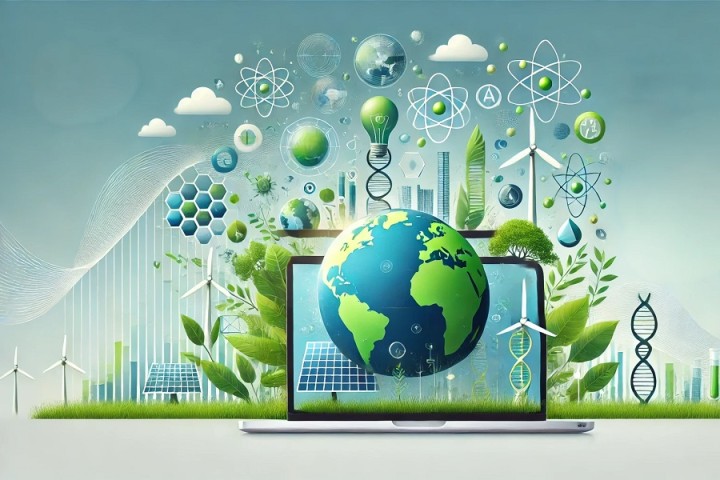World Science Day for Peace and Development: Science at the Crossroads of Environmental Sustainability

Every year on November 10, the international community observes World Science Day for Peace and Development, a UNESCO initiative celebrating the vital role science plays in advancing humanity. This year, the focus has shifted to highlight the environmental implications of scientific advancements, emphasizing both the accomplishments and the challenges we face in using science to promote environmental sustainability and peace. The day serves as a reminder of the immense responsibility borne by scientists, policymakers, and citizens alike in ensuring that scientific progress aligns with ecological conservation, sustainable development, and the overall well-being of our planet.
Science and Environmental Conservation: A Vital Role
The environmental sciences have paved the way for crucial advancements in understanding, conserving, and managing ecosystems.
Conservation of Biodiversity: The scientific study of biodiversity has revealed how diverse species contribute to ecosystem stability, providing services like pollination, nutrient cycling, and pest control. Conservation biology—a field that gained momentum in the 20th century—has emphasized the importance of protecting endangered species and fragile ecosystems.
Protecting Natural Resources: Natural resources such as water, forests, and soil are foundational to human existence, yet they are increasingly threatened by unsustainable exploitation. Advances in environmental science have fostered the development of more sustainable resource management practices. For example, the forestry sector has implemented sustainable forest management practices based on scientific studies, aiming to balance wood production with ecosystem preservation. Similarly, innovations in water treatment and conservation technology have made it possible to improve water quality, restore ecosystems, and mitigate the impacts of water scarcity.

Excessive tree cutting is one example of unsustainable exploitation. Photo by Pixabay/ Reijo Telaranta
Climate Science and Environmental Resilience: The study of climate change is one of the most urgent and widely discussed areas within environmental science. Through climate modeling and data analysis, scientists have been able to predict potential impacts of climate change, ranging from rising sea levels to extreme weather events. This research has not only highlighted the need for global cooperation but has also driven efforts to mitigate greenhouse gas emissions, develop renewable energy sources, and adapt to inevitable climate changes.
Sustainable Technologies: A Path Forward?
Scientific advancement has led to an explosion of technologies designed to support a more sustainable future. From renewable energy systems to smart agriculture, these innovations have made substantial contributions to reducing human impact on the environment.
Renewable energy sources like solar, wind, and hydropower are critical to transitioning away from fossil fuels and reducing carbon emissions. Scientific innovation has vastly improved the efficiency and accessibility of these technologies. For instance, solar cells have become more affordable, and offshore wind farms can now generate more power.

photo: nationalgrid
Moreover, Agriculture consumes a vast amount of water, energy, and land, often at the cost of environmental health. Smart agriculture, enhanced by technologies like precision farming, remote sensing, and drone monitoring, aims to improve efficiency while reducing environmental impact.
Waste management is also a growing issue worldwide, and science plays a crucial role in promoting a circular economy—a system that minimizes waste by reusing, recycling, and repurposing products and materials.

Use of spraying drones in smart agriculture. (photo: Shutterstock)
Addressing Climate Change: The Global Scientific Commitment
Climate change is a global issue that demands international collaboration and policy, both of which are deeply rooted in scientific findings. Through studies on greenhouse gases, carbon footprints, and sustainable energy, scientists have provided the foundation for international agreements such as the Paris Agreement, which aims to limit global warming to well below 2 degrees Celsius.
One of the key scientific solutions to climate change is carbon sequestration—techniques designed to capture and store carbon dioxide before it enters the atmosphere. Scientists have developed ways to sequester carbon in soil, forests, and even deep underground. Renewable energy sources, such as wind, solar, and geothermal, also provide alternatives that reduce the need for fossil fuels and offer sustainable options for power generation.
Additionally, scientific research has revealed that protecting and restoring ecosystems can offer natural solutions for climate adaptation. For example, mangrove forests protect coastlines from storms, coral reefs support marine biodiversity, and forests serve as carbon sinks. Investing in these ecosystems provides natural resilience against climate change and supports biodiversity.

the mangroves, Ten Thousand Island Reserve - Dolphin, Birding and Shelling Tour
The Double-Edged Sword: When Technology Has Unintended Environmental Consequences
While scientific advancements have generated solutions to environmental challenges, some technologies have had unintended ecological consequences. These examples highlight the complexity of environmental solutions and the need for careful assessment.
Electric Vehicles (EVs): Electric vehicles are seen as an eco-friendly alternative to traditional cars, yet the extraction of rare metals like lithium and cobalt for EV batteries can lead to significant environmental harm. Mining these materials contributes to soil degradation, water pollution, and biodiversity loss, raising questions about the sustainability of current battery production.
Solar Cells and Renewable Energy Waste: Solar power provides a renewable energy source, but solar panels have limited lifespans and can generate toxic waste if improperly disposed of. Solar panels
Biodegradable Plastics: Biodegradable plastics, often marketed as environmentally friendly, don’t always decompose completely, especially in marine environments where microplastics can harm aquatic life. Moreover, the perception of biodegradable plastics as a “green” solution sometimes leads to overconsumption, exacerbating waste issues.
Artificial Intelligence (AI) Energy Consumption: The development of AI has driven advancements in environmental monitoring and smart agriculture, but it also requires significant energy resources. Data centers that support AI consume vast amounts of electricity, often from non-renewable sources, which can partially offset the environmental benefits of AI technologies.
Smart Agriculture and Chemical Use: Smart agriculture aims to enhance crop yields and resource efficiency, but its reliance on chemical fertilizers and pesticides can harm ecosystems if mismanaged.

Photo: solrecycle.co
Looking Ahead: Science, Development, and the Pursuit of Peace
As we commemorate World Science Day for Peace and Development, it is essential to recognize both the promise and the challenges that science presents in the quest for a sustainable future. Scientific innovation has equipped humanity with the tools needed to address some of the most pressing environmental issues. However, the path forward is complex, requiring careful navigation to avoid unintended consequences that may harm the very ecosystems we aim to protect.
Through concerted efforts from governments, scientists, and citizens alike, we can harness science for sustainable development that respects the limits of our natural resources. By prioritizing research, ethical practices, and ecological awareness, humanity can strive to create a future where scientific progress coexists harmoniously with environmental sustainability, securing peace and prosperity for generations to come.

